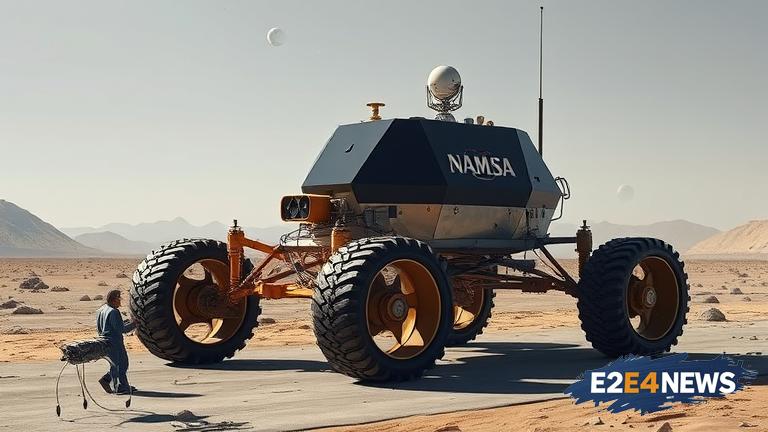NASA has announced the selection of cutting-edge instruments designed to be integrated into the Artemis Lunar Terrain Vehicle, a crucial component of the agency’s plans to return humans to the Moon by 2025. These instruments will play a pivotal role in advancing our understanding of the lunar surface, aiding in the discovery of resources, and ensuring the safety of future astronauts. The selected tools include a high-resolution 3D terrain mapping system, a spectrometer for analyzing mineral composition, and a radiation sensor to monitor environmental hazards. These technologies will enable the rover to navigate the lunar terrain with greater precision, identify potential resources such as water ice, and provide critical data for constructing safe habitats. The instruments were chosen based on their ability to withstand the harsh lunar environment and their capacity to gather comprehensive data. This development marks a significant step forward in NASA’s Artemis program, which aims to establish a sustainable human presence on the Moon. The Lunar Terrain Vehicle is expected to be deployed in the near future, with initial missions focusing on the Moon’s south pole, where water ice deposits have been detected. The data collected by these instruments will not only support scientific research but also inform the design of future lunar habitats and life support systems. Additionally, the rover’s findings will contribute to broader goals, such as preparing for a manned mission to Mars. International collaboration is expected to play a key role in the development and operation of the Lunar Terrain Vehicle, with NASA working closely with global partners to achieve these ambitious objectives. The integration of these advanced instruments underscores NASA’s commitment to pushing the boundaries of space exploration and utilizing cutting-edge technology to overcome the challenges of lunar exploration. As the Artemis program progresses, the insights gained from the Lunar Terrain Vehicle will be instrumental in shaping the next generation of space missions. The selection of these instruments is a testament to the ingenuity and innovation driving NASA’s efforts to explore and understand our celestial neighbor. With the Lunar Terrain Vehicle set to become a cornerstone of lunar exploration, the chosen instruments will pave the way for unprecedented discoveries and advancements in space science.
